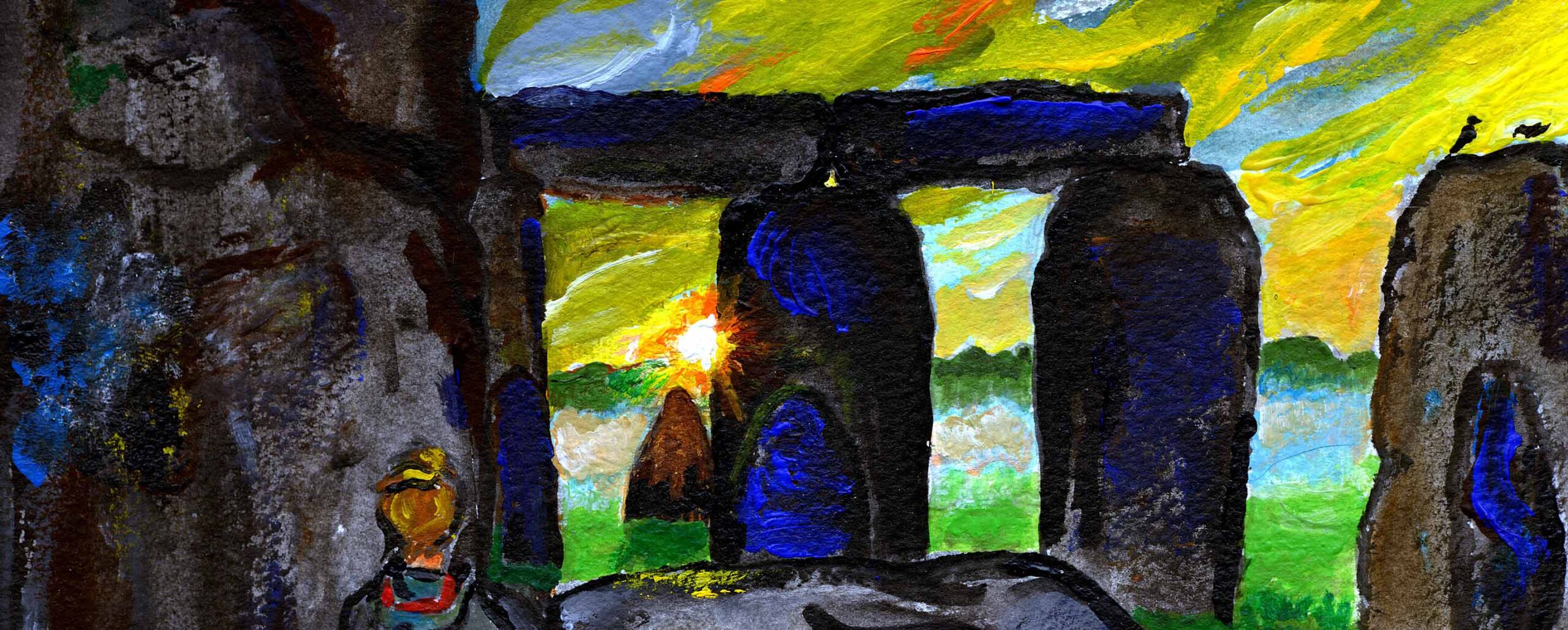This year it will happen on Thursday September 22, at 14:21 Universal (Greenwich) time.

At this instant, Earth will have its north pole tilted maximally forward along its direction of travel. That is the very definition of the autumn equinox. It’s really a more fundamental definition than the usual one, that this is the time when night (nox) and day are equal.
Yet it takes a few seconds to remember that this is what is happening, because it feels a little paradoxical – sounds more like spring than autumn. Our part of our planet is leading the way – which sounds like a breakthrough into more light, but is the opposite.
It makes sense when you think about it for a moment more. The north pole is leaning forward in anticipation of the time when it will be leaning most away. Earth is entering the half of its orbit where its northern hemisphere is tilted away, and that is the wintry half. Picture someone stooping forward to enter a darker room. Or picture the planet as a spinning skater, always leaning at 23 degrees in relation to the ice. Now she’s sideways to the Sun; in December she’ll be head-away-from, feet-toward, the Sun.

At this moment of balance between the summer and winter halves of the year, the Sun enters, appropriately, the constellation of the “Scales,” Libra. Or did, two thousand years ago; so it is still regarded as doing so, astrologically. Because of the gradual change called precession, spinning Earth is now oriented a different way, and the Sun appears back among the stars of Virgo.

Ecliptic-based chart of the Sun’s motion in September, from Astronomical Calendar 2014. The Sun is shown for each date at its true size, or twice size at the 1st, 11th etc. of the month. On Sep. 22 it crosses the celestial equator, and the 180° line of longitude, anciently the beginning of the sign Libra; it won’t reach the starry region of Libra till Oct. 20.

This is fascinating. It makes good sense. I’ve been puzzling, though, over the appearance that the portion of the earth that is actually facing away from the sun on spring equinox (in your illustration) actually points towards the sun on the autumnal equinox. Somehow, though, the rotation of the earth must be such that the same side faces the sun at each of the quarter points (equinoxes and solstices)? This, presumably, is also why our clocks can remain constant and still accurately reflect the rotation of the earth with respect to the sun. Otherwise, every day the clock time would be different from solar time until the two were not coordinated at all (without daily adjustment). How is it that the earth’s rotation is so well synchronized with its orbit around the sun? it’s not like the moon, whose period of rotation is the same as its orbital period, so that the same side always faces the earth.
I don’t think I said that correctly. Of course the same side doesn’t face the sun at each of the quarter points (which is why those points occur at different times every year as compared to previous years). I think what’s puzzling me is that as the earth orbits the sun, the sun is moving to a new position with respect to the earth, yet clock time remains constant and seems to correspond with the sun’s position in the sky. It seems like that relationship should change so that when the earth is on the opposite side of the sun every 6 months, noon, for example, is actually midnight.
Kevin, you’ve answered your own first question. Yes, the side of Earth facing the Sun at each of the quarters can be any side of Earth. If, in that first picture with the four globes, I were to draw them with their maps showing (the coasts of the continents), you would see the 2016 Sep 22 14:21 UT globe with the Sun overhead at longitude 35.25 east (somewhere in east Africa). At the instant of last year’s autumn equinox, Sep. 23 8:21, the Sun was overhead at longitude 54.75 west (I think, brain slow at this sort of thing), somewhere near the mouth of the Amazon. And so on.
As for your second question, if I’ve understood it: No, clock time is not based on the direction from Earth to Sun in space. It’s based on the azimuth of the Sun: the direction from you to the Sun in relation to your local horizon. So, to that extent, it doesn’t matter at all where Earth is in its orbit and what the direction is from it to the Sun or vice versa.
Clock time (whether measured as mean solar time or standard time) does not coincide perfectly with true solar time. Because of the Earth’s slightly elliptical orbit and because of the inclination of the Earth’s axis of rotation to the plane of her orbit around the Sun, true noon, when the Sun is exactly due south (or exactly due north in the southern hemisphere) and highest in the sky will vary over the course of the year. True solar noon can be up to about 26 minutes earlier than mean solar noon and up to about 14 minutes later (if I’m remembering those numbers correctly). (I’ve learned all this from Guy’s Astronomical Calendar and Astronomical Companion.)
I was just thinking about all of this this morning, as I was perusing the final Astronomical Calendar.
I recently got a very accurate nautical hand-bearing compass, and I marked the Sun rising at 94 degrees azimuth, 21 minutes after the “official” time of sunrise. I see the Sun rise over a nearby ridgeline, not over an ideal horizon. So the Sun had already moved that far south in azimuth.